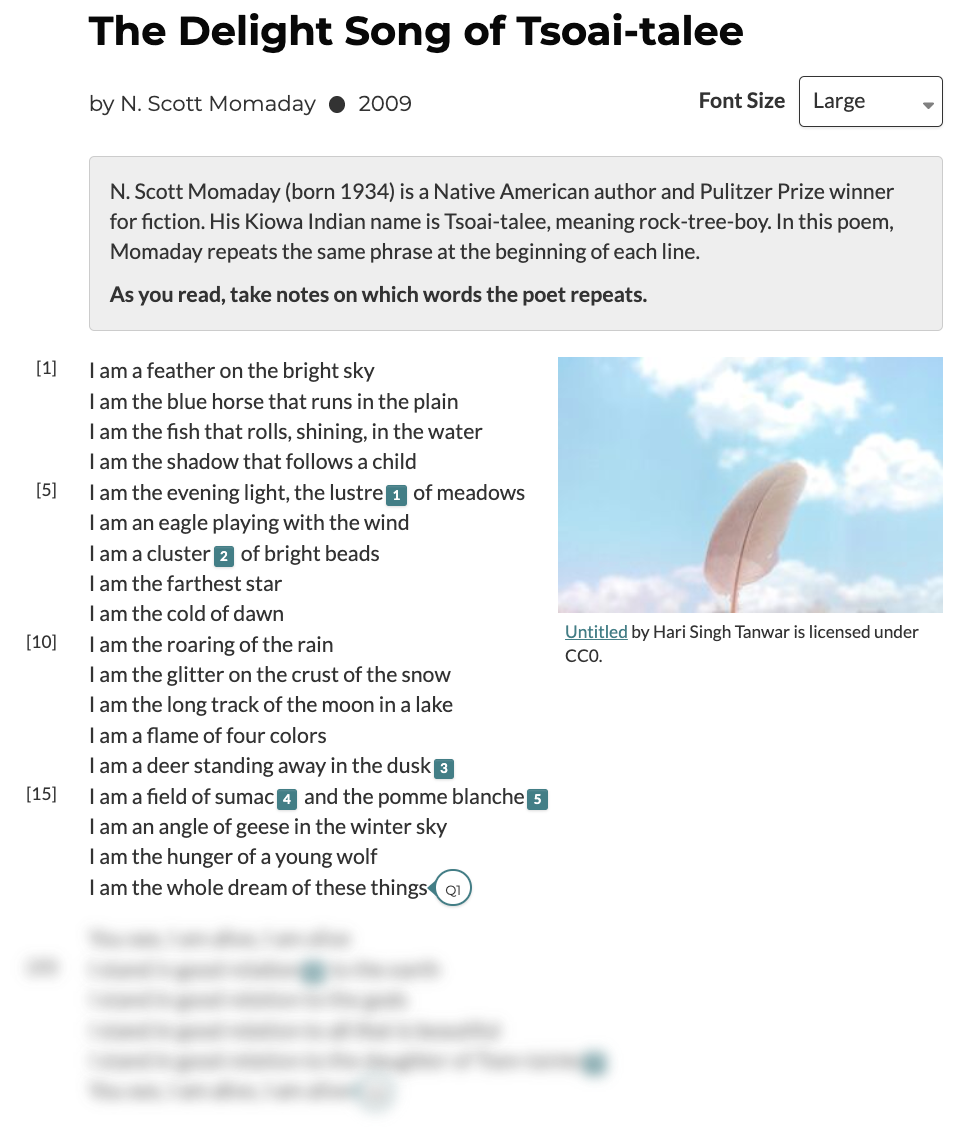 Elementary Classrooms
7 Short Texts to Celebrate National Native American Heritage Month
Elementary Classrooms
7 Short Texts to Celebrate National Native American Heritage Month
In celebration of Native American Heritage Month, we have compiled 7 short texts featuring Indigenous authors, characters, and cultures to supplement your ELA curriculum! These Native American poems and short stories will have your elementary students excited about reading and discussing important themes such as identity, community, and friendship and family.
“Miss Perfect” by Teresa Kraus (3rd Grade)
When her school announces an essay contest on “What it means to be a Navajo,” Kimberly is determined to win it to prove she is as “perfect” as her older sister Amanda. In her essay, Kimberely talks about all the special Navajo traditions and culture her Nálí, or grandmother, taught her. When she sees how excited Amanda is for her to win the contest, Kimberely feels like she won in more ways than one.
As students read, encourage them to take note of how Kim changes throughout the story. Have students complete Discussion Question 2, “In the story, Kim feels jealous because Amanda is ‘Miss Perfect.’ Have you ever felt jealous of someone? What were you jealous about? How did you move on from your jealousy?”
“The Delight Song of Tsoai-Talee” by N. Scott Momaday (3rd Grade)
In this poem, N. Scott Momaday, whose Kiowa name is Tsoai-Talee, talks about how he sees himself in the world. Tsoai-Talee, which translates to rock-tree-boy, expresses how he feels most alive when connected spiritually to Earth.
After reading, have students complete Discussion Question 2, “The poet shares that they are ‘alive’ when they experience nature. What things make you feel alive? They can be things that you sense, feel, or do.” If you want students to work on their writing skills, have students write down their answers before starting the class discussion.

“The Basket Weaver” by Jacque Summers (3rd Grade)
Yo’ee, a shy young girl of the Chamush people, spends her time weaving baskets with her grandmother. After watching the Chief tell a story to the children of the tribe, Yo’ee wishes she could tell stories too, but is scared of speaking in front of others. When she combines her basket weaving talents with her love of stories, Yo’ee presents a new way of storytelling to her tribe.
Help students bolster reading comprehension by having them complete Discussion Question 1, “In the text, the chief tells a story, or folktale, that Yo'ee has heard many times but still likes to hear again. Can you think of a story you have heard many times but still enjoy? What story could you hear many times and still like? What about that story do you like the most?
“Songbird’s Winter” by Linda Grennel (4th Grade)
While stuck inside on a dreary winter day, Arrow’s grandmother tells her an Ojibwa legend of a girl called Songbird. When the tribe experienced a particularly long winter, Songbird became known for singing songs that reminded the tribe of all things they could do to prepare for spring. After hearing Songbird’s story, Arrow is motivated to learn a new skill while she waits for spring to arrive.
Pair “Songbird’s Winter” with Cynthia Leitich Smith’s “Stories for Dinner.” Have students discuss the importance of family and community in both stories and how storytelling helps the characters connect with their family and ancestors.
“Stories for Dinner” by Cynthia Leitich Smith (4th Grade)
Cynthia Leitich Smith, a member of the Muscogee Creek Nation and American Indian Youth Literature Award-winning author, describes how her family shares important stories of their ancestors while they share a meal together.
After reading, have students complete Discussion Question 4, “The speaker's family is proud to be Native American. What is an important part of your identity, or something that makes you who you are? Why are you proud of it?”
“The Woman and Her Bear: A Play Based on an Inuit Legend” by Pat Betteley (4th Grade)
In this play based on an Inuit legend, a lonely old woman rescues a young polar bear and raises him as her son. After growing up and teaching himself how to hunt, the men in the tribe became jealous of the bear for bringing home the best food. When the bear’s life is threatened by the men in the tribe, the old woman releases him to the wild but their bond remains strong and true.
Pair this short story with another Native American short story, “The Great Woman at the Bottom of the Sea.” Have students compare the two Inuit legends and discuss what they have learned about the Inuit people’s relationship and connection with nature.
“Birdfoot’s Grandpa” by Joseph Bruchac (4th Grade)
In this poem written by Abenaki native and American Indian Youth Literature Award winner, Joseph Bruchac, a young man and his grandpa drive along a rainy road that is covered with toads. Despite objections from the young man, the grandpa continuously stops to help each toad reach the other side of the road.
After reading this short poem, have students complete Discussion Question 1, “In the context of the poem, what do you think makes the old man decide that helping the toads is the right thing to do? Have you ever helped someone or something that was in need? How did you make the decision to help?”
Next Steps
Looking for more Native American short stories and texts to support reading comprehension for your elementary students? Check out the Native American History and Authors text set on the CommonLit library!
If you’re interested in learning about CommonLit’s free digital literacy program, join one of our upcoming webinars!

